Guide to antique Charles II furniture
As we look forward to the start of the next Carolean age of King Charles III, Edward Rycroft looks back on the furniture from his reginal predecessor, Charles II, and its affordability today
Standing on the brink of a new age, only history will tell the styles for which it will become famous. But one thing we do know is furniture from the reign of Charles II has stood the test of time and is greatly sought after.
Carolean furniture is some of the most charming antique furniture on the market – robust, well made and attractive, it also oozes the history it has lived through. Not only that, it is surprising just how affordable it is, while no doubt lasting for many more years to come.
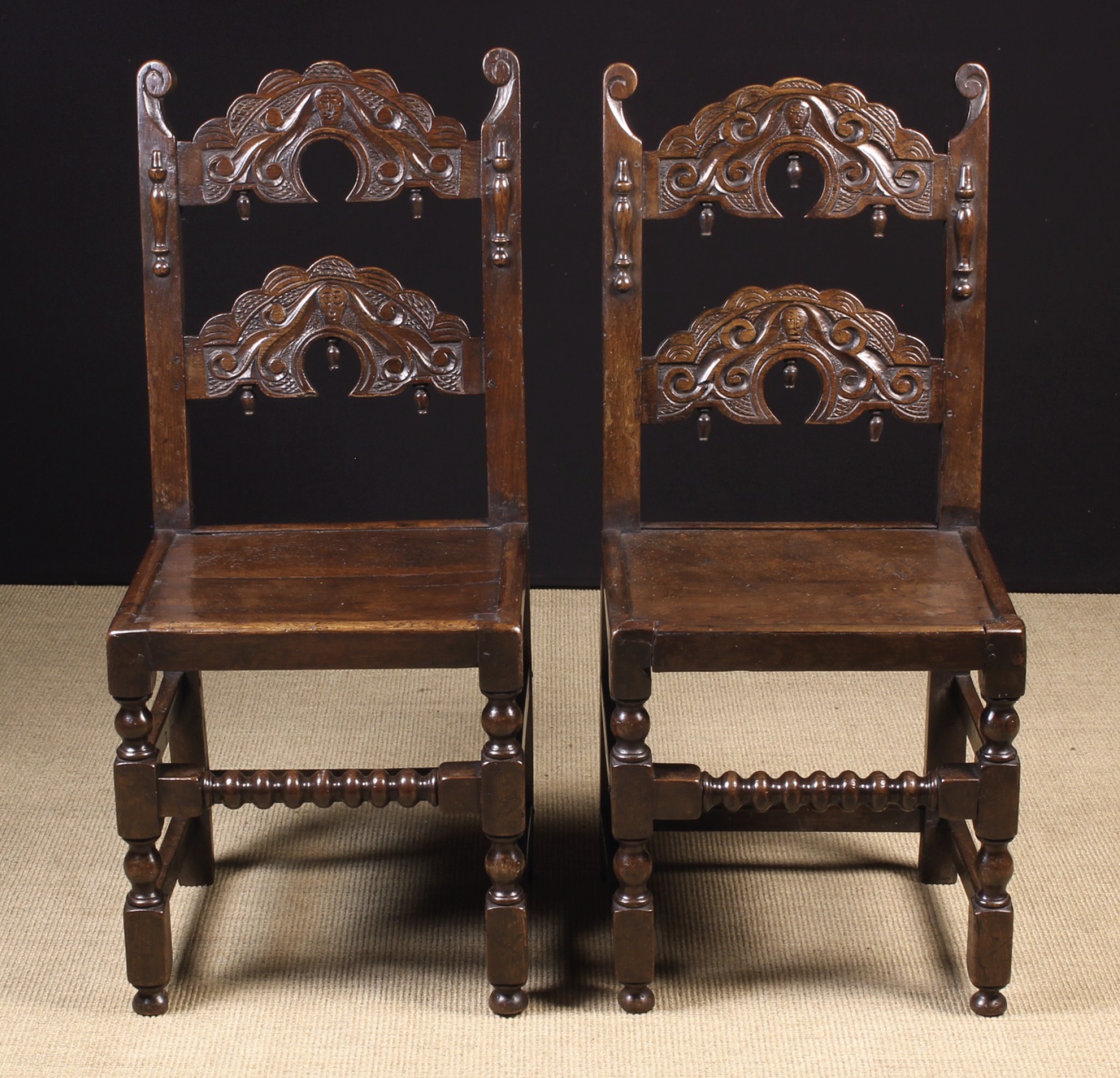
The term ‘Carolean’ is commonly used to refer to the period of around the reign of Charles II, after the Restoration of the monarchy. In the true sense of the word, this time frame runs from 1660 to 1685, spanning only a quarter of a century. However, in furniture it loosely refers to furniture made up to the turn of the 17th century through the reign of William and Mary.
After the Restoration, Britain was becoming more prosperous. In Lancashire and Yorkshire the woollen trade was booming, sparking an increase in house building. Yeoman farmers, merchants, clothiers, blacksmiths and other traders brought about an upward economic trend which would last for years. With more houses there was a subsequent need for furniture. The age of the cabinetmaker was born and, alongside traditional joiners and carpenters, furniture was made en masse, which would last for centuries.
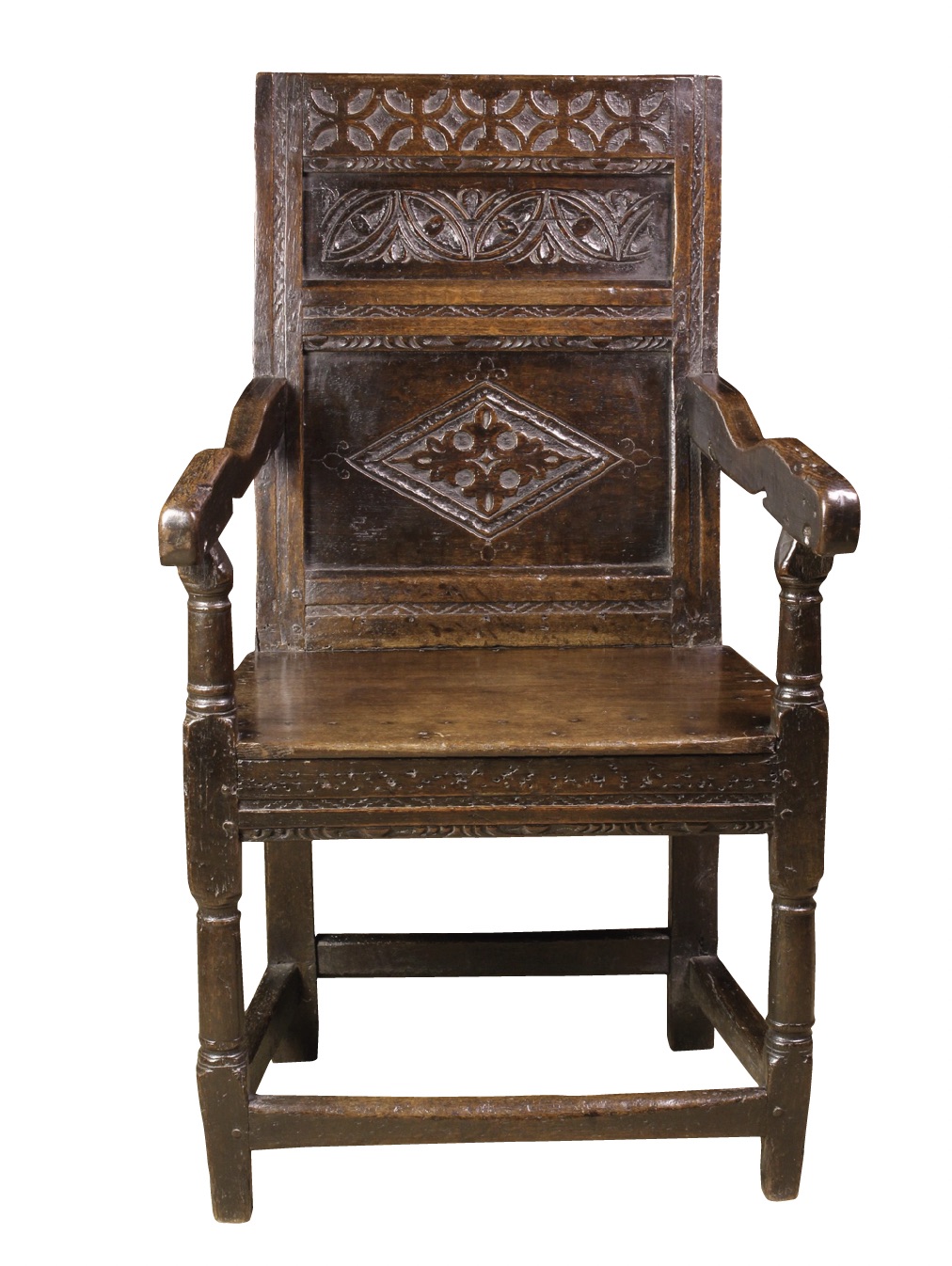
Great changes
The Great Fire of London in 1666 saw further changes. The capital’s medieval timber-framed houses, furnished with some of the finest furniture in the country, lay in ashes. London would never be the same again. In its aftermath timber was banned in the construction of buildings, which instead had to made from stone or brick. The new streets were wider and houses were built on three or four storeys to maximise space. All this would have a huge influential factor on furniture design.
With no houses being made of timber, there was a huge availability of wood for other purposes, which fuelled a huge surge in furniture making in London from 1670 and onwards.
Return of Charles II
When Charles II had returned from exile in France, he brought with him Huguenot cabinetmakers and craftsmen who had been working in the French style, usually in their native walnut. The wood was imported in mass quantities for use in England.
But while smart London homes would be furnished in the new style of walnut veneered chests and fine canework chairs, furniture around the rest of the British Isles was being made in the traditional style, which had been around for the last 50 years. This was invariably in oak and of joined construction, as shown in the 17th-century court cupboard. The method of decoration was different too and usually relied on carving and inlay.
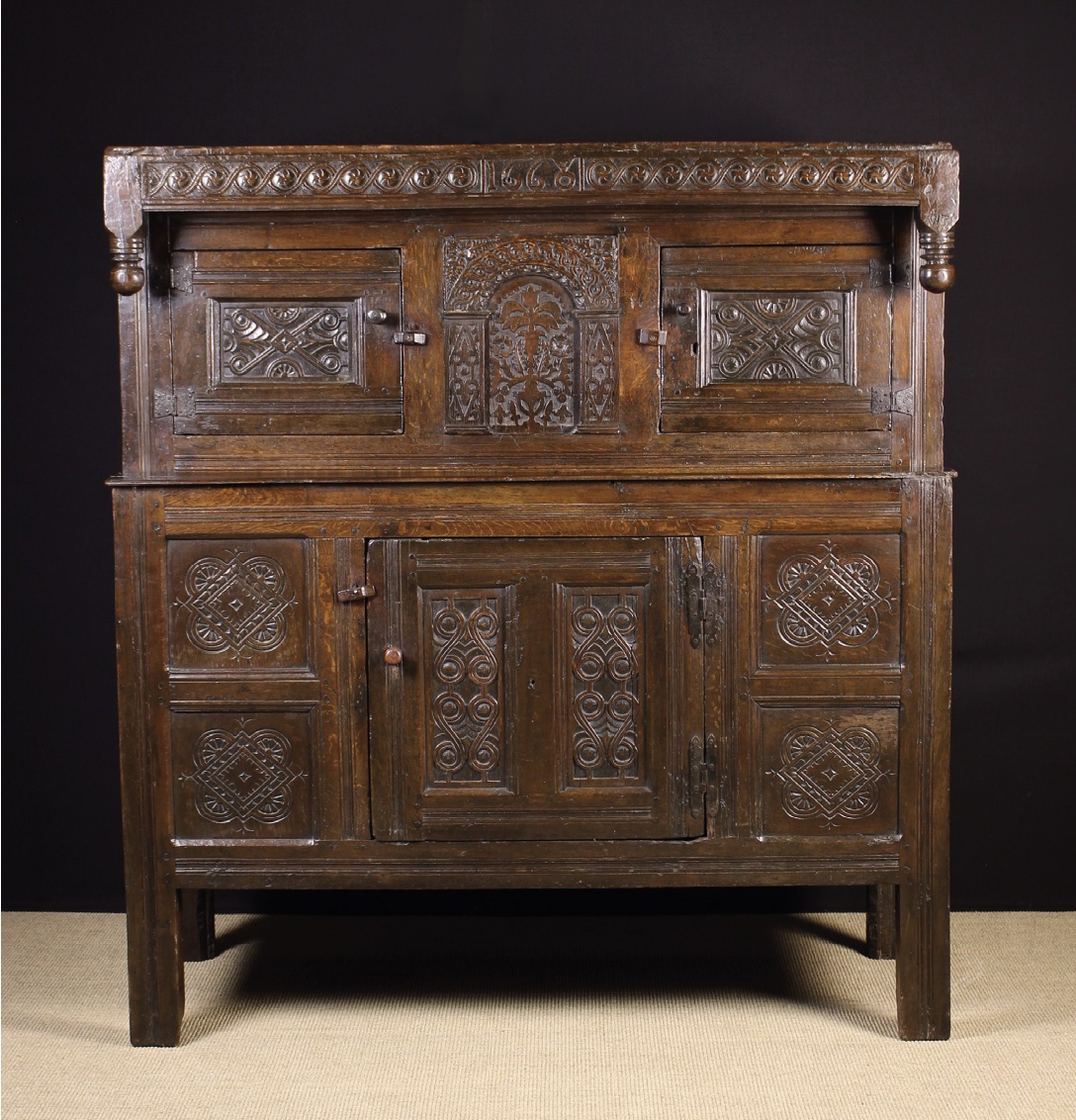
England now had two different styles being made at the same time, but miles apart in literal and design terms, with the British style invariably made from oak, and the new French style using walnut and marquetry veneering.
Oak chest, c. 1670
Here we have a very basic oak chest. Not a chest of drawers, but a chest. Essentially, it is a box with a lid; a very early and primitive piece of furniture design. Though these chests had been around in frame and panel form since the early 16th century, this example dates to the reign of Charles II, nearly 200 years later.

Again, it is a very simple design – essentially a box with moulded stiles and rails, simple panels and a lunette carved frieze. However, what is so attractive about this example and many others is its honesty and simplicity, but also the sturdiness of the design. This is perhaps why they have lasted for over 300 years and counting. As they were made in such large numbers, such chests are very affordable. The sale price of £420, exemplifies what value these items are and just how undervalued the current market is for furniture of this period.
Oak backstool
This is a good example of a side chair or ‘backstool’ as they are commonly referred to. The backstool was a development from a stool to which a back had been added. From Yorkshire, it shows the traditional English design before it had been influenced from the continental style with scrolled terminals to the back uprights being a common regional characteristic.
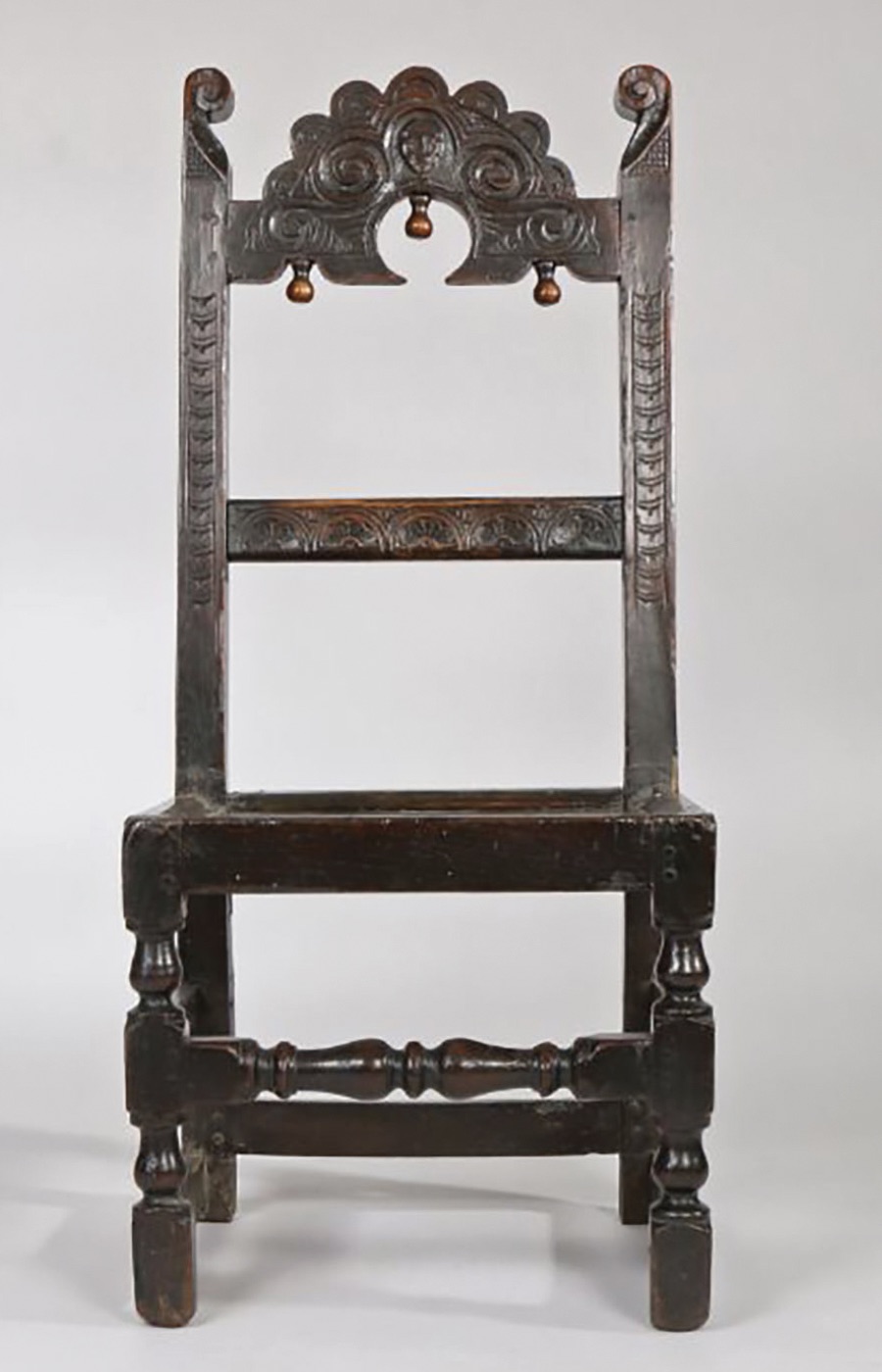
The crest rail to the top is arched and carved with turned finials to the undersides. The middle rail is carved with a simple arcaded design with simply carved uprights. The seat is a single panel, which is slightly recessed, allowing for the placement of a loose seat cushion with turned supports to the front. The stye is simple and made to be used. As such it is made economically and decorated with a basic repeated pattern.
However, this is the joy of the piece. The fact it is so simple and honest makes it genuine and attractive. This backstool sold for an unbelievable £120, representing just how affordable these pieces are; since they were built to last, they are still widely available.
Evolution of the gateleg table
Until the reign of Charles II dining took place in the hall around a large table commonly referred to as a refectory table. However, in 17th-century inventories, they became referred to as a “long table” and made throughout the 16th and 17th centuries. This table was very much the forerunner of the gateleg table which came into use around the time of Charles II.
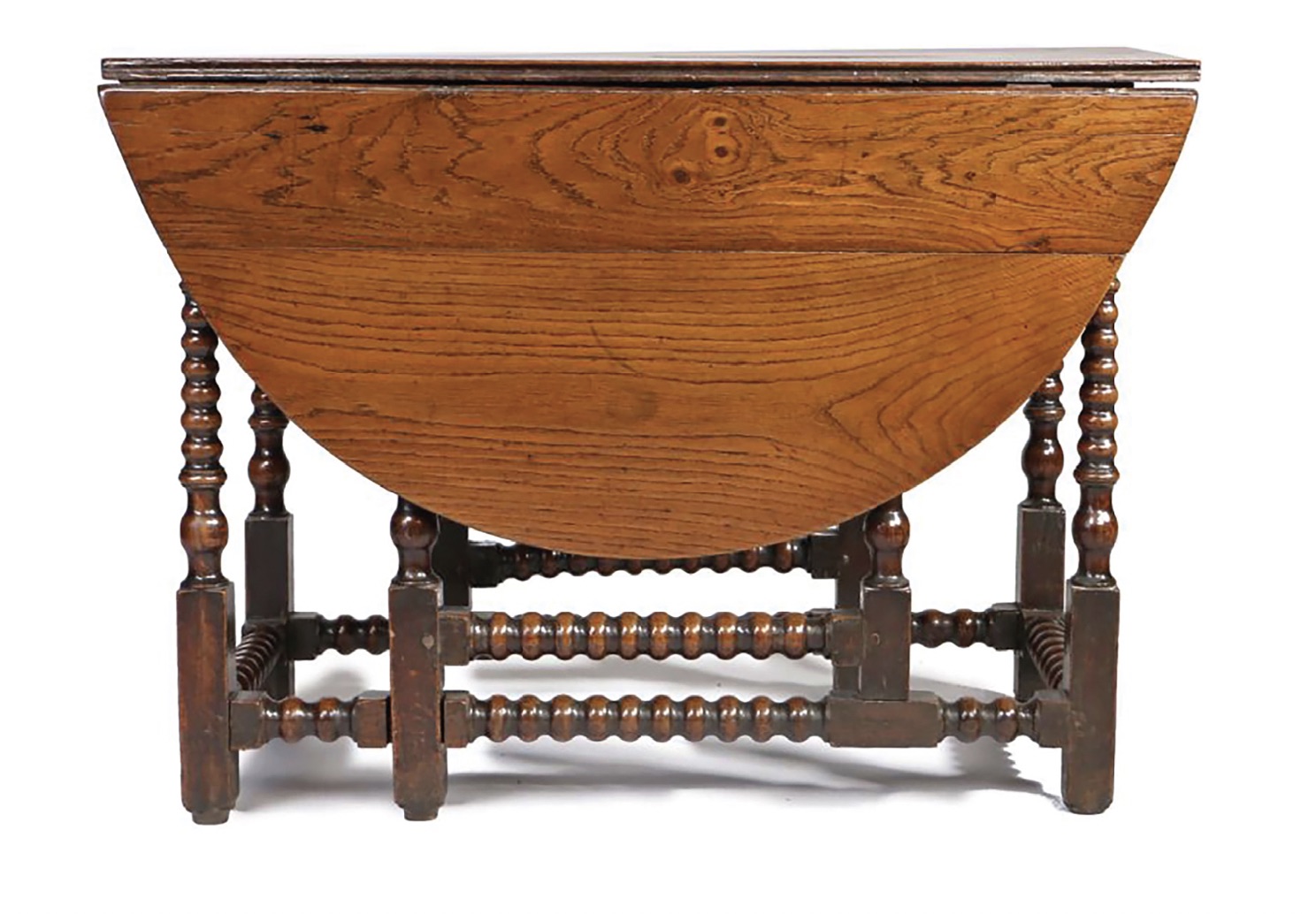
This gateleg table is actually thought to be early 18th century but remains a good example of gateleg tables of this period. The whole piece is made from oak and has a bobbin-turned frame. The turned supports were always turned on a pedal lathe from unseasoned green timber. Perhaps one of the most important factors to bear in mind is that because the turnings were created on a pedal lathe operating at fewer revolutions per second than machine lathes, there are always very subtle differences which adds character to this furniture. A later Victorian example will not have the same originality and feel as a 17th century hand-crafted example. Selling for just £280 it is priced below that of modern tables, few of which are hand crafted.
The New French style
In the reign of Charles II, Huguenot craftsmen ushered in a new style of furniture. While still in the Baroque period, the decoration was no longer achieved by three-dimensional carving. Instead, fine furniture was now reliant on two-dimensional veneering patterns as well as floral and arabesque marquetry. Though there was some carved work and elaborate turnings and carved supports, the age-old carved oak was no-longer favoured and took on a diff erent approach. Let’s have a look at some examples of this new London style.
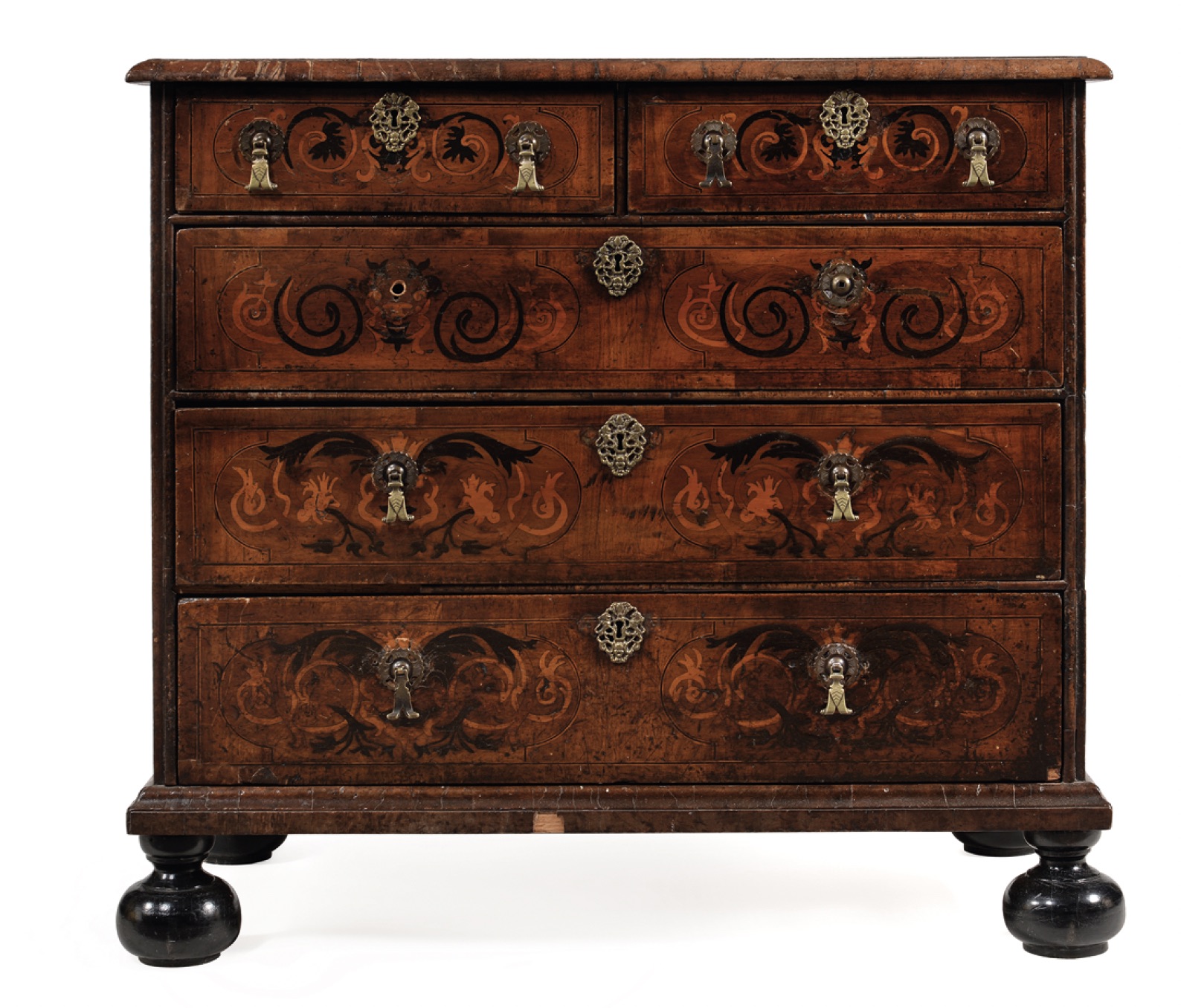
Marquetry chest of drawers
This fine marquetry chest of drawers dates to 1685-1695. Such chests, which often appeared in larger and grander houses, were frequently made from pine and oak and then veneered in walnut with marquetry inlaid decoration. On this example, which no doubt come out of quite a grand property or prestigious London address, we see two short drawers above three long drawers, which became the standard arrangement throughout the 18th and 19th centuries. The drawers are then each decorated with a typical panels of scrolled marquetry veneers. The whole piece is raised on turned bun feet, which was also a common feature for chests of this type. With such fine workmanship, one might imagine the piece would be beyond most budgets. Nevertheless, it sold for £1,000 earlier this year.
High back chair
This high-back chair made from walnut dates to around 1680. The crest rail is elaborately carved and the uprights are barley-twist turned, as well as being raked. The base is then elaborately formed with a scrollwork stretcher with the legs joined by a turned H-stretcher. Perhaps the most notable feature is the use of canework, which appears on the back panel and to the seat. This was actually for aesthetics as many of these chairs were made to line the walls of large houses.

However, a padded cushion was often used on top of the canework which distributed the weight and allowed the canework to hold up. Nevertheless, when they were lined up against a wall they enhanced many interiors and the canework offered a lighter appearance that many interiors had not of this type are often found in relatively good condition because they have been protected in country houses. Unlike other oak provincial chairs, they would have stood on wooden floors or flagstone floors which were kept clean and dry. They also weren’t dragged around the house and often got treated better. This chair sold for £750, which actually doesn’t break the bank considering what it is and the important involvement in British furniture history it has had.
Side table
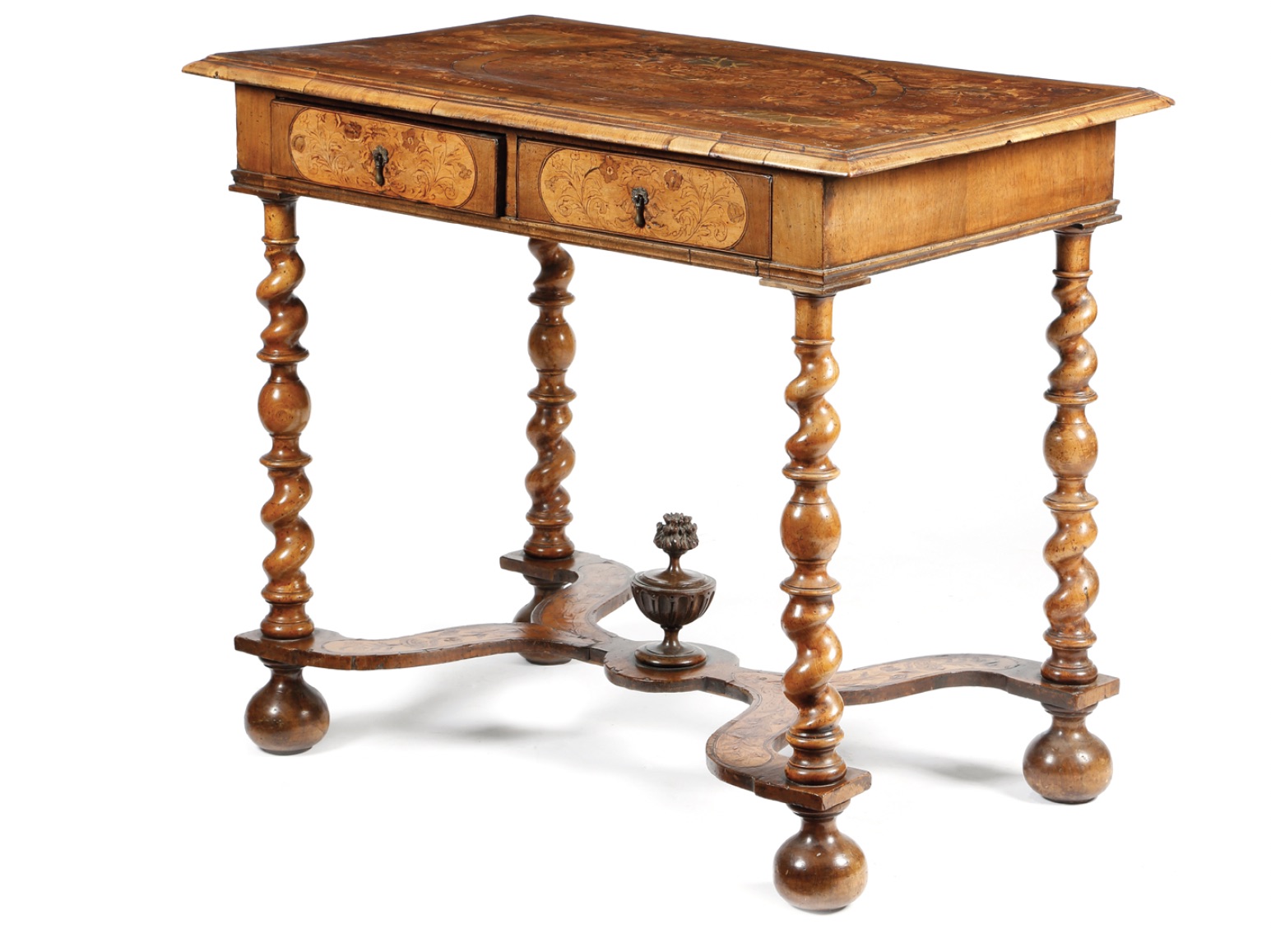
Perhaps another piece in the fine French style is this side table made from 1680-1690. Its floral marquetry is decorative yet surface and two-dimensional. The supports are barley twist and the stretchers are the cross-stretcher types which gives the whole piece a lighter appearance. In fact, it is so different from other tables of the same period that it is surprising it is of the same period, yet it is. It is a relatively refined table, which would have graced the home of a wealthy family, perhaps one living in London after the Great Fire. Despite its intricate design and originality, the table sold for £450 at auction. This means that despite the workmanship and originality, not to mention the history of the piece, it is such good value for money. Why would anyone buy a reproduction? Carolean furniture has lasted for more than the last 300 years and could easily last for many more to come.
Lancashire-born antique valuer Edward Rycroft has an enduring interest in English furniture.


